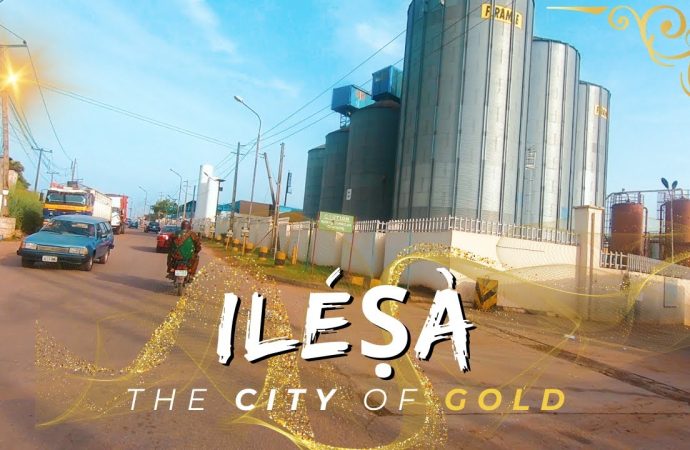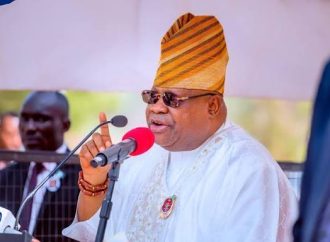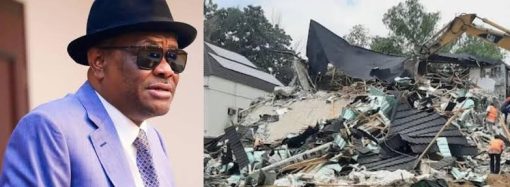Ilesa, Nigeria: A Town of Rich History, Culture, and Tradition Ilesha (also spelled Ilesa) is a historic town in Osun State, southwestern Nigeria. It is the cultural and political headquarters of Ijeshaland, home to the Ijesha people, a sub-group of the Yoruba ethnic group. Known for its bravery, commerce, and traditions, Ilesha has played a
Ilesa, Nigeria: A Town of Rich History, Culture, and Tradition
Ilesha (also spelled Ilesa) is a historic town in Osun State, southwestern Nigeria. It is the cultural and political headquarters of Ijeshaland, home to the Ijesha people, a sub-group of the Yoruba ethnic group. Known for its bravery, commerce, and traditions, Ilesha has played a crucial role in Yoruba history.
From its legendary warrior past to its thriving modern economy, Ilesha blends tradition and progress beautifully. Let’s explore the history, food, fashion, culture, dance, festivals, and kings of this remarkable city.
The History of Ilesha: A Kingdom Built on Strength
Ilesha’s history dates back to around 1250–1350 CE, when it was founded by Owaluse, a grandson of Ajibogun Ajaka (Owa Obokun Onida Arara), one of the sons of Oduduwa, the legendary progenitor of the Yoruba people.
HRM Oba OmoTooyosi Lecture Sultan Of Sokoto On Sharia In Yorubaland
The Meaning of “Owa Obokun”
Ajibogun earned the title “Owa Obokun” (meaning “King who fetched seawater”) because he brought seawater to cure his father Oduduwa’s blindness. This title has been passed down to all Ijesha kings, known as the Owa Obokun of Ijeshaland.
Ilesha as a Military and Economic Power
Located in the Yoruba Hills, Ilesha became a powerful military and trade center by the 16th century. By the 19th century, during the Yoruba civil wars, Ilesha fought fiercely against Ibadan in a bid to maintain its independence.
One of the town’s most famous warriors was Ogedengbe Agbogungboro, a fearless military leader who led Ijesha forces against Ibadan. His legacy is still honored today in Ilesha.
Food in Ilesha: A Taste of Ijesha Heritage
Food is a big part of Ijesha culture, and the people take pride in their traditional cuisine. Ilesha’s fertile land produces yam, cocoa, palm oil, cassava, and other crops that influence local dishes.
Famous Ijesha Dishes
🍽 Pounded Yam (Iyan) and Egusi Soup – The most famous Ijesha dish, pounded yam is smooth, stretchy, and best enjoyed with egusi (melon seed) soup, rich in meat, fish, and vegetables.
🥣 Ogbono Soup – Made from wild mango seeds, this soup has a distinct, slightly slimy texture and is loved for its rich taste.
🍛 Yam Porridge (Asaro) – A delicious dish made by cooking yam with palm oil, pepper, and fish or meat.
🥤 Palm Wine – A naturally fermented drink tapped from palm trees, enjoyed during festivals and ceremonies.
Food in Ilesha is more than just a meal—it’s a way of celebrating culture and community!
Fashion in Ilesha: A Blend of Tradition and Modern Style
Ilesha’s fashion is deeply rooted in Yoruba tradition, with beautiful handwoven fabrics, colorful outfits, and stylish accessories.
Traditional Ijesha Clothing
👘 Agbada – A flowing three-piece robe worn by men, usually made from aso-oke, a handwoven Yoruba fabric.
👚 Iro and Buba – A blouse (buba) and wrapper (iro) set worn by women, often paired with a stylish gele (headwrap).
🧵 Aso-Oke – A prestigious handwoven fabric used for ceremonial outfits like weddings, festivals, and chieftaincy coronations.
 Modern Ilesha Fashion
Modern Ilesha Fashion
Today, Ijesha designers mix traditional and modern styles, creating unique fashion pieces influenced by European and global trends. Ilesha is also a major hub for textile trade, with merchants known for the “osomalo” system (a method of selling clothes on installment payments).
Culture and Traditions of Ilesha
Ilesha is deeply rooted in Yoruba customs, with a strong sense of community, respect for elders, and a passion for storytelling.
Religion in Ilesha
Before colonial times, Ijesha people practiced traditional Yoruba religion, worshipping deities like Orunmila (god of wisdom) and Sango (god of thunder).
In the 19th century, Islam and Christianity arrived in Ilesha. Today, the town is home to both mosques and churches, coexisting with traditional beliefs.
Art and Craftsmanship
Ilesha has a rich tradition of gold jewelry-making, blacksmithing, and beadwork. The town also has deposits of gold and quartzite, which have influenced local craftsmanship.
Dance and Music in Ilesha
Dance is an important part of Ijesha life, used to express joy, storytelling, and spiritual connection.
Popular Ijesha Dances
🥁 Bata Dance – A high-energy dance performed with the bata drum, featuring fast footwork and rhythmic beats.
💃 Festival Dances – Performed during the Iwude Festival, these dances involve groups of men and women moving in sync with talking drums, flutes, and xylophones.
⚔ Warrior Dances – Inspired by Ogedengbe, these dramatic dances mimic battle movements, celebrating Ijesha military history.
Today, modern influences like Afrobeat and hip-hop blend with traditional dances, keeping Ilesha’s culture alive.
Festivals in Ilesha: Celebrating History and Tradition
Ilesha hosts many colorful festivals that attract visitors from across Nigeria and the world.
🎉 Iwude Festival – The biggest festival in Ilesha, held every December to honor the Owa Obokun (king). It includes parades, music, dance, and traditional rituals.
👑 Owa Obokun Coronation Ceremonies – When a new Owa Obokun is crowned, an elaborate ceremony with music, feasting, and ancestral blessings takes place.
🌿 Oro Festival – A sacred festival celebrating ancestral spirits and Yoruba deities, usually observed by men.
These festivals bring Ijesha people together, reinforcing unity and cultural pride.
The Kings of Ilesha: Past and Present Owa Obokun Rulers
The traditional ruler of Ilesha is the Owa Obokun Adimula of Ijeshaland.
Famous Owa Obokun Rulers
- Owa Obokun Ajibogun Ajaka – The legendary founder of Ilesha.
- Owa Obokun Aromolaran I (1898–1942) – One of the most influential kings of Ilesha.
- Owa Obokun Aromolaran II (1982–2023) – A respected ruler who modernized Ilesha.
- Owa Obokun Haastrup (2025–present) – The current king, known for promoting Ijesha culture.
The palace of the Owa Obokun is a historic site, where major festivals and royal ceremonies take place.
| Owa Ajibogun | – |
| Owa Owaka Okile | |
| Owa Obarabara Olokun Eshin | |
| Owa Owari | 1466 – 1522 |
| Owa Owaluse | 1522 – 1526 |
| Owa Atakunmosa | 1526 – 1546 |
| Yeyelagagba | 1588 – 1590 |
| Yeyegunrogbo | 1588 – 1590 |
| Owa Biladu I | 1652 – 1653 |
| Owa Biladu II | 1653 – 1681 |
| Yeyewaji | 1681 – |
| Owa Bilaro | 1681 – 1690 |
| Owa Bilayiarere | 1691 – 1692 |
| Owa Bilagbayo | 1713 – 1733 |
| Yeyeori | 1734 – 1749 |
| Ori Abejoye | 17.. – … |
| Owa Bilajagodo “Arijelesin” | … – … |
| Owa Bilatutu “Otutu bi Osin” | 1772 – 1776 |
| Owa Bilasa “Asa abodofunfun” | 1776 – 1788 |
| Owa Akesan | 1788 – 1795 |
| Owa Bilajara | 1… – 1807 |
| Ogbagba | 1807–1813 |
| Obara “Bilajila” | 1813–1828 |
| Owa Odundun | 1828–1833 |
| Gbegbaaje | 1833–1839 |
| Ariyasunle (1st time) -Regent | 1839 |
| Owa Ofokutu | 1839–1853 |
| Ariyasunle (2nd time) -Regent | 1853 |
| Owa Aponlose | 1858 –1867 |
| Owa Alobe | 1867–1868 |
| Owa Agunlejika I | 1868 – 1869 |
| Vacant | 4 Jun 1870 – 1871 |
| Owa Oweweniye (1st time) | 1871–1873 |
| Vacant | 1873 |
| Oweweniye (2nd time) | 1873–1875 |
| Owa Adimula Agunloye-bi-Oyinbo “Bepolonun” | 1875 – 1893 |
| Owa Alowolodu | Mar 1893 – Nov 1894 |
| Vacant | Nov 1894 – Apr 1896 |
| Owa Ajimoko I | Apr 1896 – Sep 1901 |
| Owa Ataiyero [Atayero] | 1901–1920 |
| Owa Oduyomade Aromolaran I | June 1920– July 31, 1942 |
| Ajimoko “Haastrup” – Regent | 1942 – 10 Sep 1942 |
| Ajimoko II “Fidipote” | 10 Sep 1942 – 18 Oct 1956 |
| J. E. Awodiya – Regent | 18 Oct 1956 – 1957 |
| Owa Biladu III “Fiwajoye” | 1957 – Jul 1963 |
| .Ogunmokun… – Regent | Jul 1963 – 1966 |
| Owa Peter Adeniran Olatunji Agunlejika II | 1966–1981 |
| Owa Gabriel Adekunle Aromolaran II | February 20, 1982 – September 11, 2024 |
| N/A |
Ilesha Today: A City of Progress
As of 2025, Ilesha remains a vibrant city with a thriving economy based on cocoa farming, gold mining, and education.
Modern Landmarks
🏞 Erin-Ijesha Waterfalls – A breathtaking natural attraction.
🏫 Ilesa Grammar School – One of Nigeria’s oldest and most prestigious schools.
🏛 Ilesha Gold Deposits – Contributing to Nigeria’s mining industry.
Ilesha’s blend of ancient traditions and modern development makes it one of the most culturally rich towns in Nigeria!
Geography
Ijeshaland is located at latitude 8.92°N and Longitude 3.42°E. It lies in a forested region at the heart of the Yoruba country, west of the Effon ridge which separate the Ijeshas from the Ekitis to their east, and at the intersection of roads from Ile-Ife, Oshogbo, Ado Ekiti and Akure. The Ijesa cultural area presently covers six local government councils within Osun state and Okemesi currently the headquarter of Okemesi/Ido-ile LCDA in Ekiti State of Nigeria. The Ijesa however have lost a lot of land due to wars and separation in the 19th century . Many people in Ekiti State have very similar origins to the Ijesa and are thought to have close familial relations to the Ijesa people .
The Ijesha territory is adjoined by the Ekiti on the east, the Igbomina to the north, the Ife to the south, and the Oyo and Ibolo to the west.
The nationally famous Olumirin waterfalls, more popularly known as Erin-Odo Ijesha Waterfalls is located in Ijeshaland.
Ijeshaland is rich in Gold and has the largest deposit in Nigeria. It is currently estimated to have 5 billion US dollars worth of Gold in the Ilesa Gold Belt.
| Total population | |
|---|---|
| ~ 2,312,660 | |
| Regions with significant populations | |
| Osun State – 1,230,339 ” (2024) · Ilesha West: 205,986 · Ilesha East: 208,700 · Atakumosa East: 148,708 · Atakumosa West: 148,541, · Oriade: 290,072 · Obokun: 228,332 , · Benin Republic 400,001 •Okemesi (now in Ekiti State) : 93,244 • Lagos State 682,320. |
Geography
[edit]
Ijeshaland is located at latitude 8.92°N and Longitude 3.42°E. It lies in a forested region at the heart of the Yoruba country, west of the Effon ridge which separate the Ijeshas from the Ekitis to their east, and at the intersection of roads from Ile-Ife, Oshogbo, Ado Ekiti and Akure. The Ijesa cultural area presently covers six local government councils within Osun state and Okemesi currently the headquarter of Okemesi/Ido-ile LCDA in Ekiti State of Nigeria. The Ijesa however have lost a lot of land due to wars and separation in the 19th century . Many people in Ekiti State have very similar origins to the Ijesa and are thought to have close familial relations to the Ijesa people .
The Ijesha territory is adjoined by the Ekiti on the east, the Igbomina to the north, the Ife to the south, and the Oyo and Ibolo to the west.
The nationally famous Olumirin waterfalls, more popularly known as Erin-Odo Ijesha Waterfalls is located in Ijeshaland.
Ijeshaland is rich in Gold and has the largest deposit in Nigeria. It is currently estimated to have 5 billion US dollars worth of Gold in the Ilesa Gold Belt.
Would you like to explore more about Ilesha’s history or specific festivals? Let me know!
Thank you😊




















Leave a Comment
Your email address will not be published. Required fields are marked with *